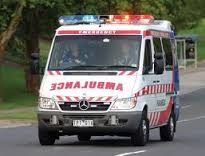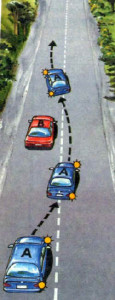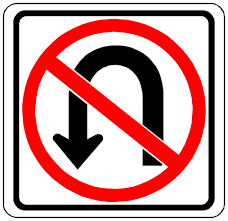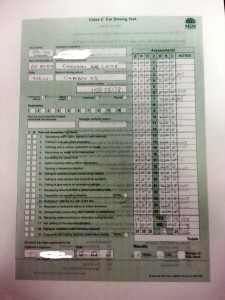NSW Driving Test Pass
Hi Cameron
Campbell passed his P test today with flying colours. He had Brian as his examiner, a very competent gentleman. Thanks you and best regards for all of the work you have done for both ours kids, cheers Alister.

Professional Safe Reliable Over 15 Years Experience
NSW Driving Test Pass
Hi Cameron
Campbell passed his P test today with flying colours. He had Brian as his examiner, a very competent gentleman. Thanks you and best regards for all of the work you have done for both ours kids, cheers Alister.
NSW – Learner Drivers From Interstate.
Learner licences
If you have a current interstate learner licence and you take up residence in NSW
and wish to continue driving, within three months you must:
• Pass an eyesight test before you can obtain a NSW learner licence.
At 17 years or older, you can attempt a driving test to obtain a NSW P1 licence if
you have:
• Held your interstate learner licence for at least 12 months.
• Passed the NSW eyesight test.
Distractions that divert attention from driving increase your risk of crashing.
Recent research suggests that at least 14 per cent of all crashes involve the driver being distracted by something inside or outside the vehicle. As many as one in ten fatalities have been directly attributed to driver distraction. Yet even though surveys have indicated that 98 per cent of people believe that using a mobile phone while driving, for example, is very dangerous, 28 per cent of people admit to doing it themselves.
Distractions from outside the vehicle account for about 30 per cent of the distractions that lead to crashes. And distractions from within vehicles account for up to about 36 per cent (the remaining 34 per cent is unknown).
Typically, the two biggest distractions inside the vehicle are other passengers and adjusting the sound system. Research has also shown that drivers using mobile phones and Global Positioning Systems (GPS) while driving are also much more likely to be involved in crashes. Text entry into a GPS unit while driving can be extremely dangerous. Sending and receiving text messages on a mobile phone while driving is also extremely dangerous, and is also illegal.
Passengers and crash risk
Other passengers can have quite an influence on your driving. Young drivers have a higher crash risk when travelling with passengers of much the same age than when travelling alone. For parents, distractions can come from trying to attend to young children in the back seat of the car when driving. However, regardless of the driver’s age, the fact remains that any distraction that takes away your attention to the driving task significantly increases your chances of becoming involved in a crash. When you are distracted or your attention is divided, you are more likely to make mistakes. This means that you should avoid or minimise distractions when you drive, particularly when you are engaged in complex driving actions.
Reducing distractions means reducing crash risk

While you can’t do much about distractions from outside your vehicle when you are driving, you can reduce sources of distraction inside your vehicle. This will help reduce your crash risk. Unfortunately, while modern cars have many new active and passive safety devices, they are also increasingly becoming the source of significant internal distractions. However, doing simple things like:
Fitting your car with a hands-free mobile phone car kit. This can help if you must take calls while driving. However, it would be much better to find a safe place to stop and take a call so that you are not distracted in any way when driving. Research has shown that using a hands-free mobile phone can also be a dangerous distraction, particularly in complex traffic situations.
Note: Learner, P1 drivers and provisional riders are banned from using phones in any way, including hands-free types. You must not use any function of a mobile phone while driving or riding. This includes phones in the hands- free mode or with the loudspeaker operating, or sending text messages.
Ensuring that mobile devices that can also function as GPS units are properly mounted in a cradle.
Only entering text into devices, ie GPS, mobile phone etc when you are stopped in a safe location.
Turning off the radio or stereo, particularly in new or challenging traffic situations.
Collecting loose items inside the vehicle and putting them in a bag or box or in the boot.
Telling passengers to avoid distracting you.
Note: P1 drivers under the age of 25 you must not drive between the hours of 11pm and 5am with more than one passenger under the age of 21. P1 riders are prohibited from carrying a pillion passenger.
RMS can grant an exemption from peer passenger restrictions if exceptional circumstances are demonstrated. Further information on how to apply for a passenger restriction exemption is available on the Application for Exemption: Peer-Passenger, One-Passenger or Prohibited Vehicle Condition available on our website or at a registry. An application fee will apply.
Only adjusting the radio, digital music devices, or load CDs, when stopped if you cannot get help while driving from a front seat passenger
In addition to demerit points, a heavy fine applies for drivers caught using or answering a hand-held phone while driving.
Geared reports on the top distractions turning the heads of drivers.
Tweet
Facebook Share
Google Plus Share
NSW Police Traffic Services Commander, Chief Superintendent John Hartley, says there’s little doubt that distracted drivers can cause traffic problems and road crashes.
He explains that there are many distractions on the road, including more and more traffic.
Additionally, drivers now also have to contend with new or more affordable technologies like smart phones, MP3 players, GPS devices, and in-car DVDs, which can act as a distraction.
Here are some of the worst driver distractions:
Mobile phones (talking and texting)
Using a mobile while driving can increase the risk of a collision by four times, according to several studies. Sending a text message is even worse.
Learner and P1 drivers are not allowed to use ANY function of a phone (including hands-free) while driving.
P2 drivers may only use a mobile phone to make or receive a call, or use the audio player if the phone is secured in a fixed mounting. If you are a P2 driver, and your phone is not in a mounting, to answer your phone it must not require you to touch or manipulate the phone in any way.
All other functions such as texting, video messaging, online chatting, reading preview messages and emailing are not allowed. The new laws make it clear that a driver in a moving or stationary vehicle (unless parked) MUST NOT HOLD a phone in his or her hand other than to pass the phone to a passenger.
Adjusting vehicle settings
This is the most common bad driving habit because many people don’t realise it’s dangerous to fiddle with the radio, air-conditioning or windows while driving.
“Crashes often occur as a result of only a moment’s inattention,” says Commander Chief Superintendent John Hartley.
“While you’re changing the CD or skimming through songs on your mp3, your full attention isn’t on the road and [it is] placing you at risk of a crash.” The best idea is to make any adjustments before you set off or put your mp3 on shuffle before you begin your journey.
Passengers
Young drivers have a greater risk of crashing when they have friends in the car.
The stats also tell us that there’s more chance of causing a fatal crash when you have two or more friends in the car, especially male passengers. However, the risk is reduced when carrying an adult or a child, compared with carrying no passengers.
Eating, drinking and smoking
Aside from the obvious dangers of drink-driving, even sipping on a non-alcoholic drink takes your focus off the road.
An American study has found that eating a cheeseburger can be more distracting than talking on a mobile. And the risk of causing a crash is just one more reason not to smoke!
External distractions
As if there wasn’t enough happening inside the car, there are lots of distractions outside too. Make sure you look out for other drivers and pedestrians, while trying to block out the roadside billboards, shops and all sorts of unexpected or interesting things going on in the streets.
FOG LIGHTS
Front and rear fog lights must only be used in fog or rain, or when conditions such
as smoke and dust limit your vision. It is a legal requirement that once conditions
improve and you can see more clearly, the front and rear fog lights are switched
off.
If your vehicle is not fitted with fog lights you may use your headlights during the
day in these adverse conditions.
HAZARD WARNING LIGHTS
Your vehicle’s hazard warning lights must not be used unless the vehicle is:
• Stopped and obstructing the path of other vehicles or pedestrians.
• Slow-moving and obstructing other road users.
• Stopped in an emergency stopping lane.
• Stopped to sell a product such as food and refreshment.
• Driving in hazardous weather conditions.
• Fitted with hazard lights as part of an anti-theft or alcohol interlock device.
HORNS AND OTHER WARNING DEVICES
You must not use the horn or any other warning device unless:
• You need to warn other road users that your vehicle is approaching.
• You need to warn animals to get off the road.
• The horn is being used as part of an anti-theft or alcohol interlock device fitted
to your vehicle.

EMERGENCY VEHICLES
Give way when you hear a siren or see the flashing blue or red lights of an
emergency vehicle such as Police, Fire Brigade or Ambulance. The siren means to
get out of the way so the emergency vehicle has a clear passage through traffic.
Generally, traffic pulls over to the left until the vehicle passes.
Overtaking other vehicles can be dangerous. The difficulty with overtaking is judging the space required to complete the manoeuvre safely.
Both single lane and multi-lane overtaking manoeuvres involve risk and require extreme care.
If you have any doubts it is best not to overtake and to wait until it is safer.
You must overtake on the right unless a vehicle is waiting to turn right, is
stationary, or if you and the other vehicle are travelling in marked lanes. In these
instances you may overtake on the left side if it is safe.

1. POSITIONING: If it becomes necessary to overtake do not tailgate the vehicle ahead as it will greatly reduce forward vision. Maintain a safe following distance.
2. SCANNING: Scan the road for approaching traffic, ensure you have enough space to safely complete the manoeuvre, check you know where the road goes next and that there are no dips or crests hiding vehicles. Some truck drivers may even flash their indicators to let you know it is safe to overtake them (in this situation, don’t just assume it is safe)
3. INDICATE: If safe indicate your intentions and check no one else is attempting to overtake you and the vehicle ahead.
4. PULL OUT: Pull out before accelerating forward so the driver ahead knows you are coming. Blip your horn if necessary to alert this driver.
5. THE RETREAT: If due to the unexpected or a miscalculation you are not going to make it, brake firmly and attempt to steer in behind the vehicle again. Do not accelerate, hope and pray.
6. THE FINISH: Pull in as soon as you can see the vehicle you have passed headlights in your centre rear vision mirror. A wave of thanks to the driver may be constructive.
When overtaking you must:
• Not go over the speed limit.
• Make sure the road ahead is clear and that there is sufficient space for you to
complete the manoeuvre (check side streets and other lanes to ensure nothing
will enter this space while you are overtaking).
• Check mirrors.
• Signal each change in position long enough to give sufficient warning to others.
• Check blind spots for motorcycles and other vehicles before changing your lane
position.
• Pass the vehicle with sufficient space to avoid a collision (you should be able to
see the vehicle you have overtaken in your rear vision mirror before you move
in front of it).
• Give way to traffic already in the lane you are moving to.
You must not overtake:
• Unless you have a clear view of any approaching traffic and you can complete
the manoeuvre safely (do not commence an overtaking manoeuvre when
approaching a crest, curve or any limited vision situation).
• Another vehicle that is stopping or has stopped at a pedestrian crossing,
intersection or railway crossing.
• Across an unbroken (continuous) line, unless the line closest to you
is broken.
• Where a road narrows.
On roads with a speed limit of more than 80 km/h, or a KEEP LEFT UNLESS
OVERTAKING sign, you must drive in the left lane unless you want to overtake
or turn right.
When being overtaken you must:
• Not increase your speed.
• Keep left and allow reasonable space for the overtaking vehicle to pass and move back into the lane.
• Keep within your lane.
You must not overtake or pass other vehicles on pedestrian or school crossings.
Take extra care when making U-turns as they can be dangerous. U-turns cannot be
made:
Where there is a NO U-TURN sign.
On motorways.
At traffic lights unless you see a U-TURN PERMITTED sign at the intersection.
Across an unbroken (continuous) lines, double centre unbroken (continuous) lines,
unless the line closest to you is broken.
You must start your U-turn from the marked lane nearest to the centre of the road
or, if there are no lane markings, the left of the centre of the road.
Before starting the U turn you must make sure it is safe: check mirrors and blind
spots and that you have a clear view of any approaching traffic.
You must not begin your U-turn unless you can make the turn without
unreasonably obstructing traffic. Give way to all vehicles and pedestrians and signal
before you start to turn.

Hi Cameron,
Thanks again for the quick lessons I had with you.
The feedback that you provided during and after the two-hour lessons helped me regain my confidence and be comfortable during the driving test today which I passed with only one error.
I will surely recommend my friends to do driving lessons with you.
Thank you.
Driving Test Pass – Deidre at Penrith
Deidre passed her driving test at Penrith. Deidre does not have a right leg, passed in a standard driving school car.

Testimonial TXT from Deidre 18/8/15.
Hi Cameron
I just want to thank you for taking a chance on me to help me 2 drive again.
Being disabled with above knee amputation is hard .
When you came today you made me feel so comfortable and I was no different than anyone else.
If you are disabled need driving lessons give Cameron a call.
Have a nice day Deidre.
Deidre lost her right leg, so driving a standard car on the streets of Sydney took a lot of guts.
Well done Deidre.
The key to good driving technique is smoothness, and the secret to smoothness is good preparation.
DRIVING POSTURE
When you first get a car take the time to adjust the seat and controls to suit your
height and build. Correct driving posture reduces fatigue, improves your control
and allows the safety features of the vehicle to operate effectively.
SEATBELTS
For seatbelts to work effectively they should be adjusted ‘low, flat and firm’.
• Low – placed below your hips to fully secure your body weight.
• Flat – no twists, turns or folds.
• Firm – about every 15 minutes when you drive pull the belt firm to remove any
slack.
AIRBAGS
Airbags are a supplementary restraining system (SRS) designed to be used in
conjunction with seatbelts. To get the most benefit from the driver’s airbag the
steering wheel should be adjusted low, facing the driver’s chest rather than the face.
BRAKING TECHNIQUE
Correct braking is done in two stages, first put light pressure on the brake pedal
and pause (set up the brakes), then progressively apply the necessary braking
pressure (squeeze).
Two-stage braking (set up and squeeze) improves braking effectiveness, reduces
the likelihood of skidding and provides better control.
Harsh or excessive braking pressure may cause skidding and a loss of control,
particularly on wet or gravel roads.
STEERING TECHNIQUE
There are two main steering techniques, ‘push/pull’ and ‘hand over hand’.
Regardless of which method is used some general rules apply:
• Steering must be smooth and progressive.
• Reduce speed before steering and wait until the vehicle begins
to straighten before accelerating.
• When steering keep both hands on the outside of the steering wheel and
thumbs along the rim.